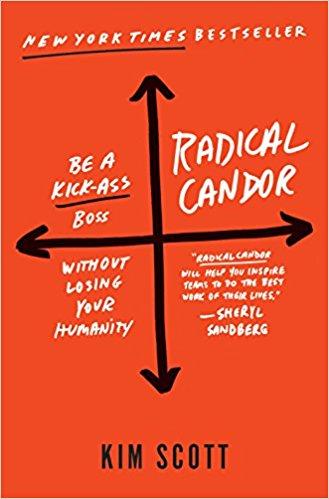Radical Candor Summary
3 min read ⌚
 Be a Kickass Boss Without Losing Your Humanity
Be a Kickass Boss Without Losing Your Humanity
“Radical Candor” will teach you how to be a boss everyone respects, and everyone loves.
About Kim Scott
 Kim Scott is a CEO of Candor, Inc., and a former faculty member of Apple University.
Kim Scott is a CEO of Candor, Inc., and a former faculty member of Apple University.
“Radical Candor Summary”
Try to ask a few people what they think makes a good leader, and you will most probably get many different opinions.
Some believe that quiet bosses are ideal, while other prefer a strong and strict boss.
However, there is one kind of boss who can be both kind and empathic, as well as direct and strict.
This is the radically candid boss.
Every workplace could benefit from practicing radical candor.
If you decide to adopt this approach, you will continuously be excited about the opportunity to motivate your team through another day of work.
Radical candor consists of two core principles.
First, the boss should genuinely care about his staff, and second – he should challenge his employees to improve their work.
You might think that because different people have different characters and behaviors, radical candor might not work for everyone.
However, we are here to tell you that you are wrong.
Radical candor is a proven way to improve and strengthen the relationship with just about any employee.
The first step you need to take is to transform your relationship to more than just a relationship with coworkers.
You need to show that you care, to open up, and to communicate on matters other than business.
However, we do not mean to say that you should make friends and forget to be a manager who challenges his staff when the expectations he sets are not met.
This is the hardest part for managers since they do not understand how they can be both caring and direct.
However, honesty and directness will open up many new lines of communication among you and your employees.
You will notice how they will become more receptive to feedback, and how they will more readily give feedback on your job as a manager.
Key Lessons from “Radical Candor”
1. How to Offer Criticism
2. Avoid Manipulative Insecurity
3. Know Your Employees
How to Offer Criticism
There is a fine line between positive criticism and being mean.
Try to compliment your employees, at the same time while you are giving criticism. Do not sugar coat things, and be as direct as you can.
This is the only way you will show that you care about your employees.
Avoid Manipulative Insecurity
Manipulative insecurity is walking the easier path. It is a sign that a manager is lazy and does not care about his or her staff.
Such a manager would state that something is good, just because he or she wants to avoid getting into conversations about how something can be improved.
Know Your Employees
There are two types of employees: rockstars and superstars, and to be able to manage them, you have to know the difference.
You need to challenge superstars, so they can quickly reach their full potential.
Rockstars, on the other hand, need stability and time, in order to become the best at the job they are given.
Like this summary? We’d Like to invite you to download our free 12 min app, for more amazing summaries and audiobooks.
“Radical Candor” Quotes
Make sure that you are seeing each person on your team with fresh eyes every day. People evolve, and so your relationships must evolve with them. Care personally; don’t put people in boxes and leave them there. Click To Tweet A good rule of thumb for any relationship is to leave three unimportant things unsaid each day. Click To Tweet The essence of leadership is not getting overwhelmed by circumstances. Click To Tweet When bosses are too invested in everyone getting along they also fail to encourage the people on their team to criticize one another other for fear of sowing discord. Click To Tweet The fastest path to artificial relationships at work, and to the gravitational pull of organizational mediocrity, is to insist that everyone have the same worldview before building relationships with them. Click To Tweet
Emir is the Head of Marketing at 12min. In his spare time, he loves to meditate and play soccer.


 Be a Kickass Boss Without Losing Your Humanity
Be a Kickass Boss Without Losing Your Humanity



